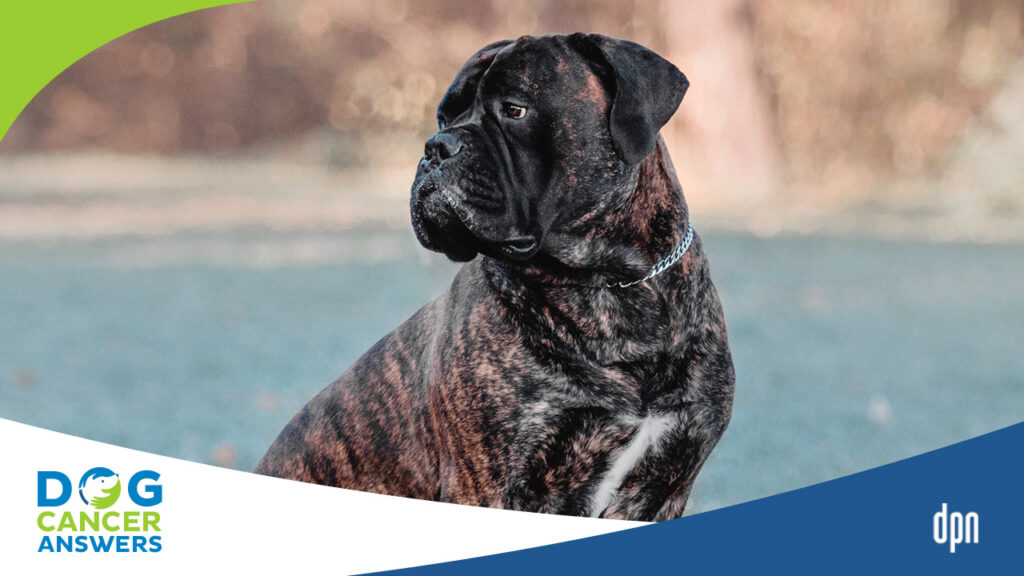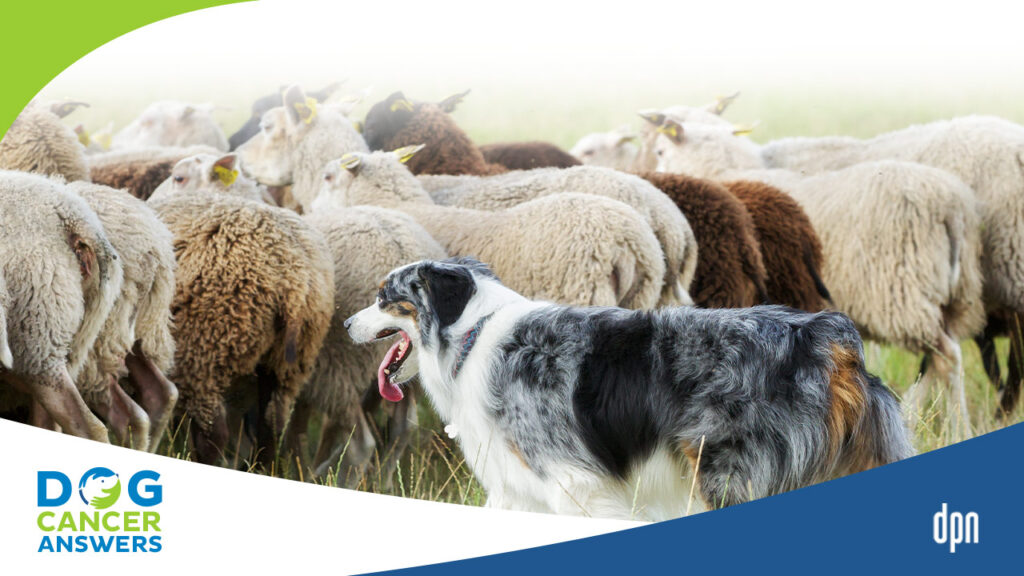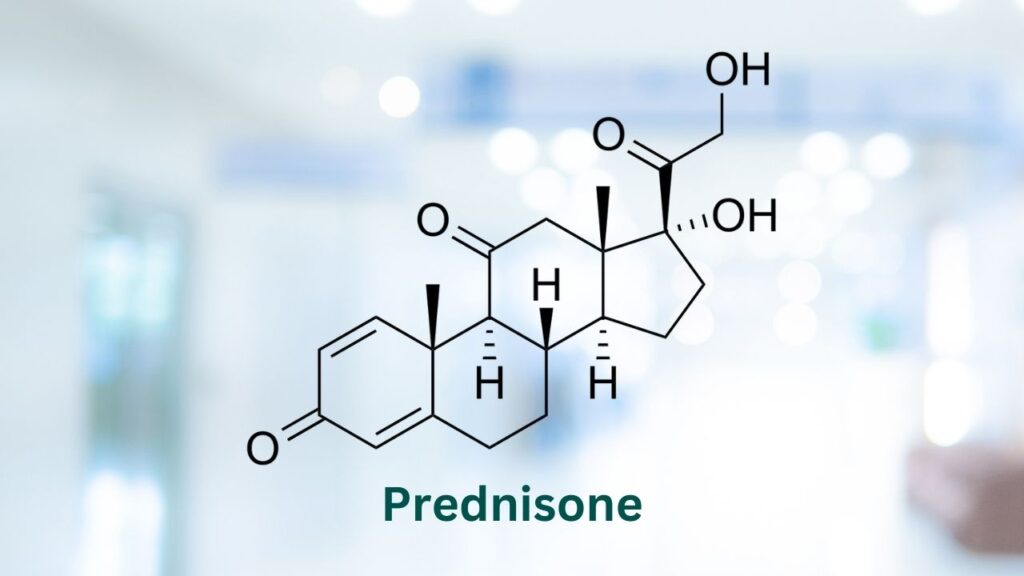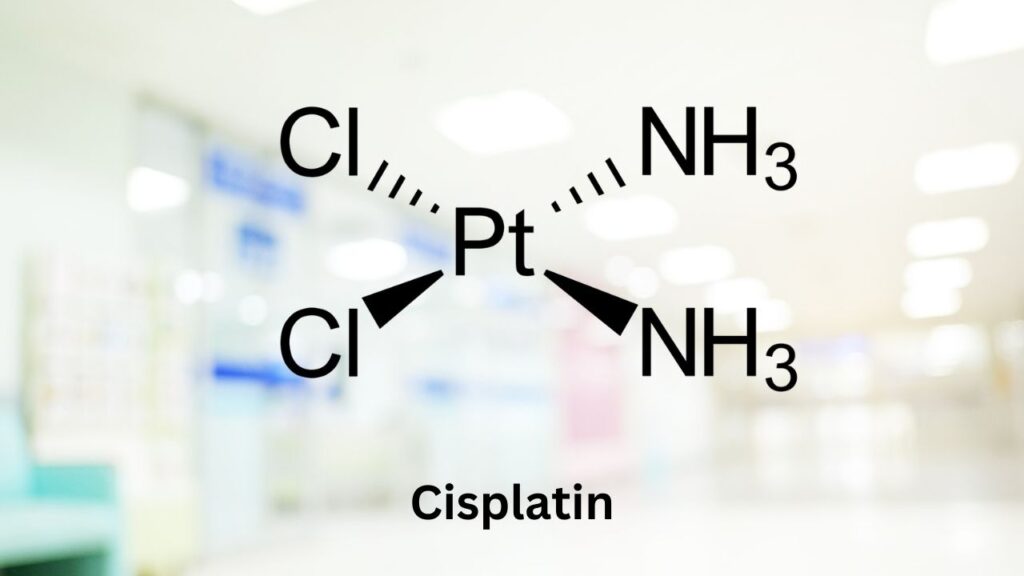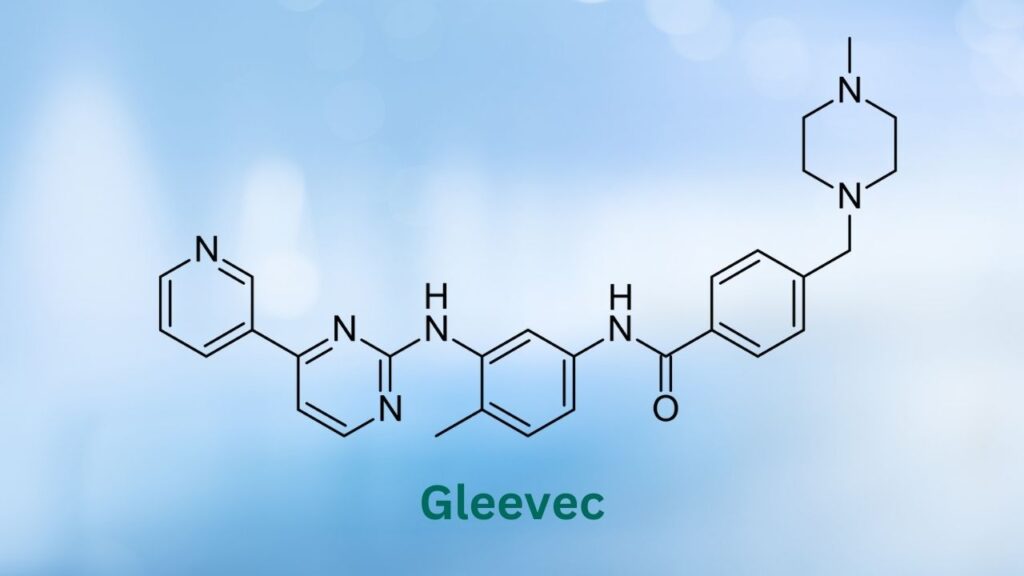Tanovea chemotherapy (generic name: rabacfosadine) is the first FDA-approved treatment for lymphoma in dogs. If standard lymphoma chemotherapy protocols aren’t an option for your dog, or if they fail to control her illness, it may be a good option.
Key Takeaways
- Tanovea is effective for lymphoma, but not as effective as the gold standard protocol, CHOP.
- It can be used as a rescue protocol for CHOP, or as a standalone treatment, or in combination with other chemotherapy drugs.
- Tanovea is an injectable chemotherapy drug, which means it is given in the hospital in a very careful manner, never at home.
- Tanovea starts working as soon as it encounters a lymphoma cell in your dog’s body.
- Side effects of Tanovea include gastrointestinal side effects like vomiting and diarrhea, decreased white blood cell count, thinning hair coat, reddened skin, skin and ear infections, and rarely, pulmonary fibrosis.
- When given alone to dogs with lymphoma, Tanovea has a 73% response rate with a remission lasting 4-6 months.
What is Tanovea Chemotherapy and What Does It Do?
Rabacfosadine is known by the brand name Tanovea.® Tanovea chemotherapy is an injectable cytotoxic agent given in the veterinary hospital over several weeks (see more on this below).
Tanovea is a prodrug,3 which means that it is inactive in its initial form. Specific canine cancer cells, particularly lymphoma, contain enzymes that convert rabacfosadine into the active agent.3,5,8 This allows Tanovea to target the cancer cells specifically while leaving normal cells unharmed.
Like many chemo drugs, Tanovea chemotherapy is given by injection into the dog’s vein. The infusion takes about 30 minutes3 and is done at the vet hospital.
Brand Names
Most drugs used in veterinary medicine were approved for use in humans and are used “off-label” in animals. There are very few drugs approved specifically for use in an animal. This makes Tanovea special: Tanovea-CA1 is the first FDA-approved dog lymphoma treatment.7
How Tanovea Affects Cancer
Rabacfosadine is inactive, so when injected into a vein and traveling throughout the body, it does not damage the normal cells it encounters.
How do we know it doesn’t harm normal cells? There are two enzymes needed to convert Tanovea into its deadly form that kills cancer cells. Most cells do not have these two enzymes; however, lymphocytes do have these enzymes, and lymphocytes are the immune cells in which lymphoma occurs.
Tanovea remains inactive until it encounters lymphoma cells. Once inside lymphoma cells, it goes through a couple of conversions before reaching its final form, PMEG diphosphate.
PMEG diphosphate is cytotoxic (deadly to cells). It inhibits (stops or blocks) DNA synthesis and triggers apoptosis (programmed cell death).5
In other words, it gets the cell’s DNA to stop making more of itself and also gets the cell to commit suicide.
Tanovea Chemotherapy Success Rates
Tanovea chemotherapy is only used in dogs; so far, it only shows promise for a couple of cancer types.
Lymphoma
Rabacfosadine is fully FDA-approved to treat canine lymphoma as of July 2021.7
It can be used as a first-line treatment for lymphoma, or it can be used a second-line treatment, also known as a rescue therapy.10
How long does Tanovea last? Given alone, it has a 73% response rate, with remission generally lasting 4-6 months.8 That means that 73% of dogs taking Tanovea went into remission, generally lasting 4-6 months.
Studies are underway to evaluate how Tanovea does when combined with other chemotherapy drugs or protocols.
- An initial study alternated Tanovea with doxorubicin. Treatments were given once every three weeks for a total of six, with three treatments of each drug. This treatment pattern yielded response rates and remission duration about the same as a full CHOP protocol (the gold standard protocol for lymphoma in dogs).5 A confirmatory study is underway to see if these results hold up.
- Colorado State University, the University of Wisconsin-Madison, and the University of California-Davis are all testing a protocol that uses rabacfosadine as part of CHOP.
Combining Tanovea with other drugs may prove helpful, and we will update this article with results as they are released.
Multiple Myeloma
Early studies in dogs with multiple myeloma show promising results.9 A confirmatory study was completed in 2021 but has not been published yet.
Lymphoid Leukemia
Early studies using Tanovea chemotherapy in dogs with lymphoid leukemia have shown promising results, but more study is needed.
This episode of DOG CANCER ANSWERS has a lot of information about Tanovea from one of the veterinarians involved in its use right from the beginning of its interesting history.
Dr. Douglas Thamm has been involved with Tanovea since the beginning. He shares his insights into when (and when not) to use Tanovea in this episode of DOG CANCER ANSWERS.
Tanovea Side Effects
The majority of side effects are mild 9 and either resolve on their own or with symptomatic treatment at home.
Side effects of Tanovea that are typical for chemotherapy drugs include:7.8
- Gastrointestinal signs such as vomiting and diarrhea
- Decreased white blood cell count
- Thinning hair coat
- Reddened skin
- Skin and ear infections
Dogs undergoing treatment with Tanovea should be monitored closely for changes in the skin and ears to catch any potential infections as early as possible. Depending on the severity of side effects, the next dose of Tanovea can be delayed to give the skin extra time to heal.7
A more concerning, but thankfully rare, side effect of Tanovea is pulmonary fibrosis. 7 Here is what we know about this rare side effect:7
- Changes in the lungs are delayed and may not be apparent for several months after treatment.
- Pulmonary fibrosis has been fatal in about 2% of dogs treated with Tanovea at this point.
- Researchers are reviewing the literature to try to identify risk factors, but so far, this side effect appears to be idiosyncratic. That means it happens sort of randomly due to individual differences that aren’t common to most dogs.
- If your dog already has a lung problem, your veterinarian or veterinary oncologist will probably recommend avoiding Tanovea.
- They will probably not want to use Tanovea in dogs who are of a breed or mix with a genetic predisposition to developing pulmonary fibrosis (most notably West Highland White Terriers).
When to Not Use Tanovea
In some situations, Tanovea chemotherapy should either not be used at all or with caution.
Risk factors include:2
- West Highland White Terriers have a potential genetic predisposition to developing pulmonary fibrosis (which can be fatal, see above) and should not use Tanovea
- Terrier breeds and mixes also have a potential genetic predisposition to developing pulmonary fibrosis and should not use Tanovea
- Dogs who have already been diagnosed with pulmonary fibrosis
- Dogs who have undergone half-body radiation in the past, as these dogs are already at higher risk of developing pulmonary fibrosis
- Dogs who are pregnant, lactating, or being used for breeding due to the risk of birth defects
There are no known drug interactions at this time, and rabacfosadine is safe for dogs with the MDR1 mutation1
There are no known supplement interactions at this time.
How Is Tanovea Administered?
Tanovea is an injectable cytotoxic agent, so it is only given at veterinary facilities. It is given once every three weeks for a total of five treatments.9
When used with doxorubicin, the two drugs are alternated, with a treatment being given once every three weeks for a total of six treatments.6
Dose frequency may vary if Tanovea is part of another chemo protocol.
If the patient experiences side effects, treatment can be (and usually is) postponed to give the dog extra time to recover.7
What If I Miss a Tanovea Chemotherapy Dose?
If your dog misses a dose of rabacfosadine, contact your veterinarian or oncologist to determine the best time to reschedule. Doses postponed due to scheduling or travel difficulties can be given as soon as possible, while doses postponed due to side effects can be scheduled according to the dog’s needs.
Storage and Handling of Tanovea
Tanovea is a cytotoxic chemotherapy agent, so personal protective equipment must be used when handling and administering it. It is always given in the hospital setting by veterinary professionals.
- Packer R. What’s new in veterinary cancer? DVM 360. https://www.dvm360.com/view/what-s-new-in-veterinary-cancer-. Published December 28, 2020. Accessed December 11, 2022.
- Tanovea® (rabacfosadine for injection). Elanco US. https://www.elanco.us/products-services/dogs/tanovea. Accessed December 14, 2022.
- Saba CF, Vickery KR, Clifford CA, et al. Rabacfosadine for relapsed canine B-cell lymphoma: Efficacy and adverse event profiles of 2 different doses. Veterinary and Comparative Oncology. 2017;16(1). doi:10.1111/vco.12337
- Saba CF, Clifford C, Burgess K, et al. Rabacfosadine for naïve canine intermediate to large cell lymphoma: Efficacy and adverse event profile across three prospective clinical trials. Veterinary and Comparative Oncology. 2020;18(4):763-769. doi:10.1111/vco.12605
- Thamm DH, Vail DM, Post GS, et al. Alternating rabacfosadine/doxorubicin: Efficacy and tolerability in naïve canine multicentric lymphoma. Journal of Veterinary Internal Medicine. 2017;31(3):872-878. doi:10.1111/jvim.14700
- Weishaar KM, Wright ZM, Rosenberg MP, et al. Multicenter, randomized, double‐blinded, placebo‐controlled study of Rabacfosadine in dogs with lymphoma. Journal of Veterinary Internal Medicine. 2021;36(1):215-226. doi:10.1111/jvim.16341
- FDA grants first full approval for treatment of lymphoma in dogs. U.S. Food and Drug Administration. https://www.fda.gov/news-events/press-announcements/fda-grants-first-full-approval-treatment-lymphoma-dogs. Published July 15, 2021. Accessed December 14, 2022.
- Tanovea. https://campaign.elanco.com/en-us/tanovea/. Published 2021. Accessed December 14, 2022.
- Thamm DH, Vail DM, Kurzman ID, et al. GS-9219/VDC-1101 – a prodrug of the acyclic nucleotide PMEG has antitumor activity inspontaneous canine multiple myeloma. BMC Veterinary Research. 2014;10(1):30. doi:10.1186/1746-6148-10-30
- Vail DM, Thamm DH, Liptak JM. Hematopoietic tumors. Withrow and MacEwen’s Small Animal Clinical Oncology. November 2019:688-772. doi:10.1016/b978-0-323-59496-7.00033-5
Tanovea is a trademark of Elanco or its affiliates.
Topics
Did You Find This Helpful? Share It with Your Pack!
Use the buttons to share what you learned on social media, download a PDF, print this out, or email it to your veterinarian.


